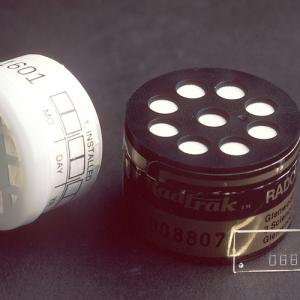Health risks from high radon levels can be avoided with simple fixes
Q. I'm in the process of selling my home and my realtor told me to get the house tested for radon. I had no idea this stuff was in my house until I tested it. You should write about this health hazard.
About 1 in 15 homes in the United States contains high levels of radon, an invisible, odorless, radioactive gas. High radon levels have been found in every state.
Radon levels vary greatly throughout the United States, even within small geographic regions. A stretch from New York through Pennsylvania to Maryland and Virginia, and a broad area of the upper Midwest, have geological formations that yield higher radon levels. In contrast, radon levels are low in the Southeast as far west as Texas and along much of the West Coast.
Radon is the nation's second leading cause - after smoking - of lung cancer. Smoking combined with radon is an especially serious health risk.
A link between cancer and working in underground mines was suspected even before radon was identified as an element. In 1556, German scholar Georgius Agricola reported high death rates of miners in the Carpathian Mountains of Eastern Europe. More than 300 years later, autopsy studies of miners in that region revealed a common cause of death to be chest tumors, which were later shown to be primary lung cancer.
Radon comes from the natural decay of uranium in soil, rock and water. It rises into your home through fissures in the foundation, floors and walls. Radon can also be in your water, especially well water.
Radon test kits are available at most hardware stores. If you discover that the radon level is unacceptable in your home, there are systems to remove the gas. There is no safe level of radon, but the risks can be reduced by lowering the level.
The amount of radon in the air is measured in pico curies per liter of air or pCi/L. The average indoor radon level is about 1.3 pCi/L. The outside air contains about 0.4 pCi/L of radon. The U.S. Environmental Protection Agency recommends corrective action if the radon level is 4 pCi/L or higher.
The U.S. Congress has set a long-term goal that indoor and outdoor levels be equal. While this goal is not yet reachable in all cases, the radon in most homes today can be reduced to 2 pCi/L or below.
If you've tested the air in your home and found a radon problem, and your water comes from a well, have your water tested, too. Radon in your home's water is not usually a problem when its source is surface water.
The primary system for reducing radon is made up of a vent pipe and fan, which pulls radon from beneath the house and blows it outside. This is called a soil-suction, radon-reduction system. It does not require major changes to your home.
The cost of fixing a home generally ranges from $800 to $2,500 (with an average cost of $1,200). Costs depend on the size and design of your home and which radon reduction methods are needed.






















































